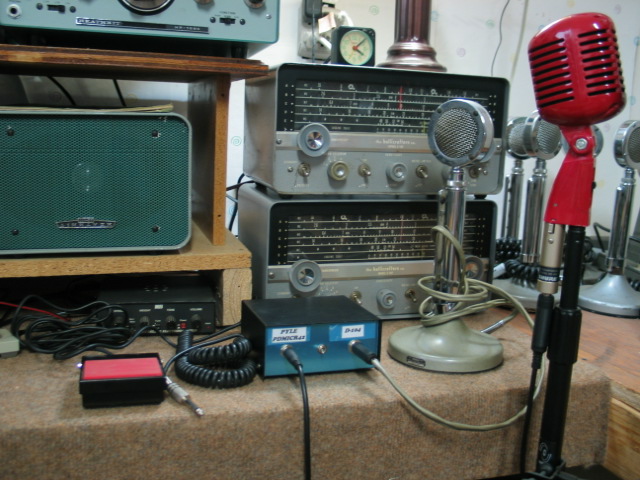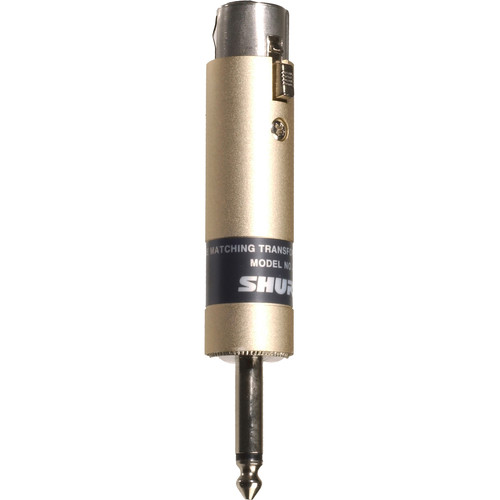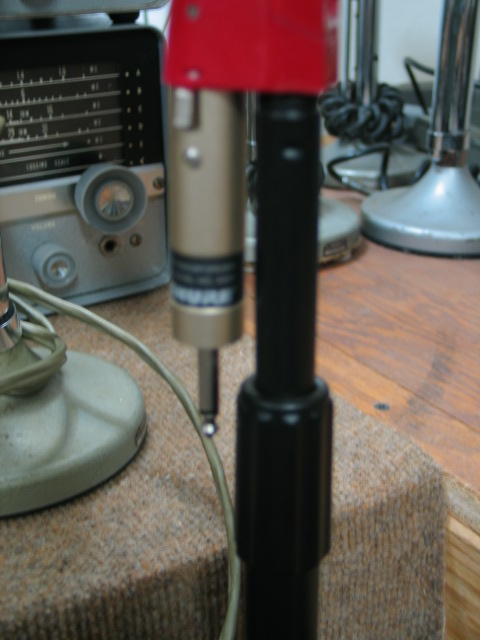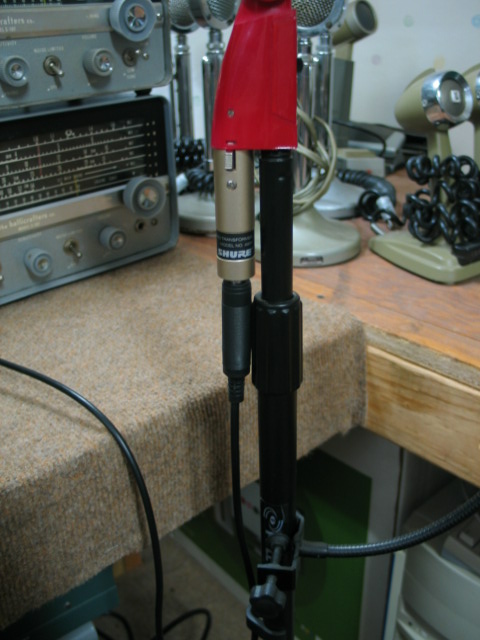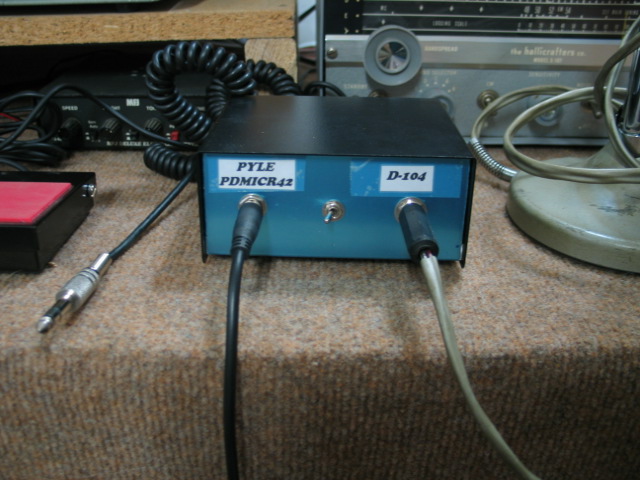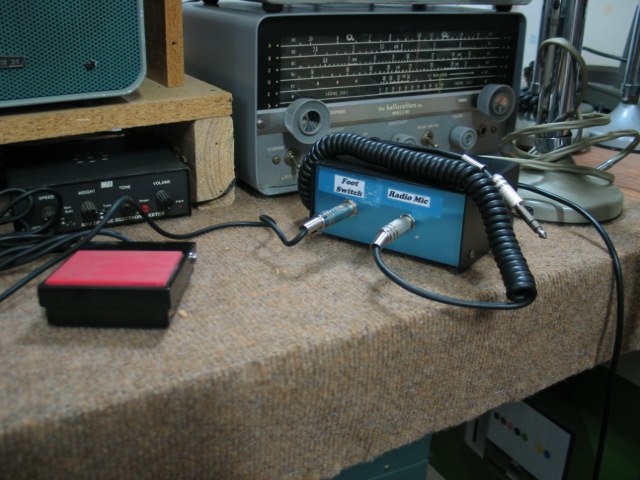This page is dedicated to the Pyle PDMICR42 with its Shure A85F XLR Low-Z balanced audio output to HI-Z unbalanced audio output adapter with home-built interface box and mic cabling. Here’s a picture of the complete Pyle PDMICR42 microphone, adapter, adapter extension cable, metal interface box, front mic sockets, and microphone select toggle switch.
If this arrangement is used with a KW Hybrids, the microphone ground return MUST be separated from the Foot PTT switch ground. The interface box can be made using a “Plastic box” so the grounds do not mix making it easier to separate the Mic element ground from the PTT ground at the KW hybrid MIC socket. The microphone is mounted on a floor microphone stand I found on eBay. What’s not shown in the “Breath” filter that filters out a lot of the “Siss” sound when speaking into the microphone. It also keeps any saliva from hitting the microphone. The filter “locks into” the base of the microphone’s XLR socket. The adapter can be removed by pressing on the lock release push button seen at the base of the microphone and top of the adapter where the adapter plugs into the microphone.
.
This picture shows the Shure A85F XLR Low-Z balanced to HI-Z unbalanced audio adapter. Note the XLR female connector on top and the 1/4″ mono plug on the bottom. The XLR female connector has the 3 wire connections to an internal matching transformer to change the microphone’s Low-Z balanced audio output to HI-Z unbalanced output. This adapter plugs into and snaps securely into the base of the microphone.
========================================================
This picture shows the Pyle PDMICR42 microphone with the SHURE A85F XLR Balanced audio LOW-Z to HI-Z Unbalanced adapter securely plugged into the base of the PDMICR42 microphone. The adapter’s XLR end has a snap-in secure mechanical connection to keep the adapter from falling out or pulling out of the microphone.
================================================================
This picture shows the Adapter’s “Unbalanced” output six foot 2 conductors extension cable with 1/4″ female mono-socket on one end that plugs into the adapter’s 1/4″ plug and a 1/4″ mono male plug on the other end that plugs into the adapter interface box 1/4″ mono socket. The 1/4″ mono plug is not shown in this picture.
================================================================
This picture shows the adapter’s output extension cable and a D-104 microphone plugged into the front of the metal adapter box. I built the connection box using simple easy to obtain sockets. The toggle switch allows the user to switch between the D-104 or the Pyle PDMICR42 microphone. No manual changing of microphone cables is required, simply flip the switch to change microphones.
=================================================================
This picture shows the rear view of the interface box. The Foot PTT switch plugs into the socket on the left and the coiled cord to the radio which has the Mic audio and the foot PTT switch plugs into the socket on the right. The foot PTT switch is a N.O. SPST switch found on eBay. The cable connecting the foot PTT switch is 2 conductor that came with the footswitch. I added the 1/4″ mono plug. The coiled cord to the radio did not come with the plugs, those I added. The cable has the Mic audio along with the Foot PTT switch in a 4 conductor cable. The plug is a 1/4″ stereo plug with “TIP” for Footswitch PTT, the “Ring” connects to the mic audio, and the “Sleeve” connects to the grounds.
=================================================================
The above microphone arrangement works. I’ve used it with my Heathkit Apache TX1 but audio reports from receiving stations say the audio is a bit flat and has a lot of “bass”. I listened to it on a separate receiver and the reports are correct, way too much bass. If you build the same system, I can’t say you’ll be pleased with it nor if it will work in your radio configuration. I still have this microphone configuration.
==================================================================
